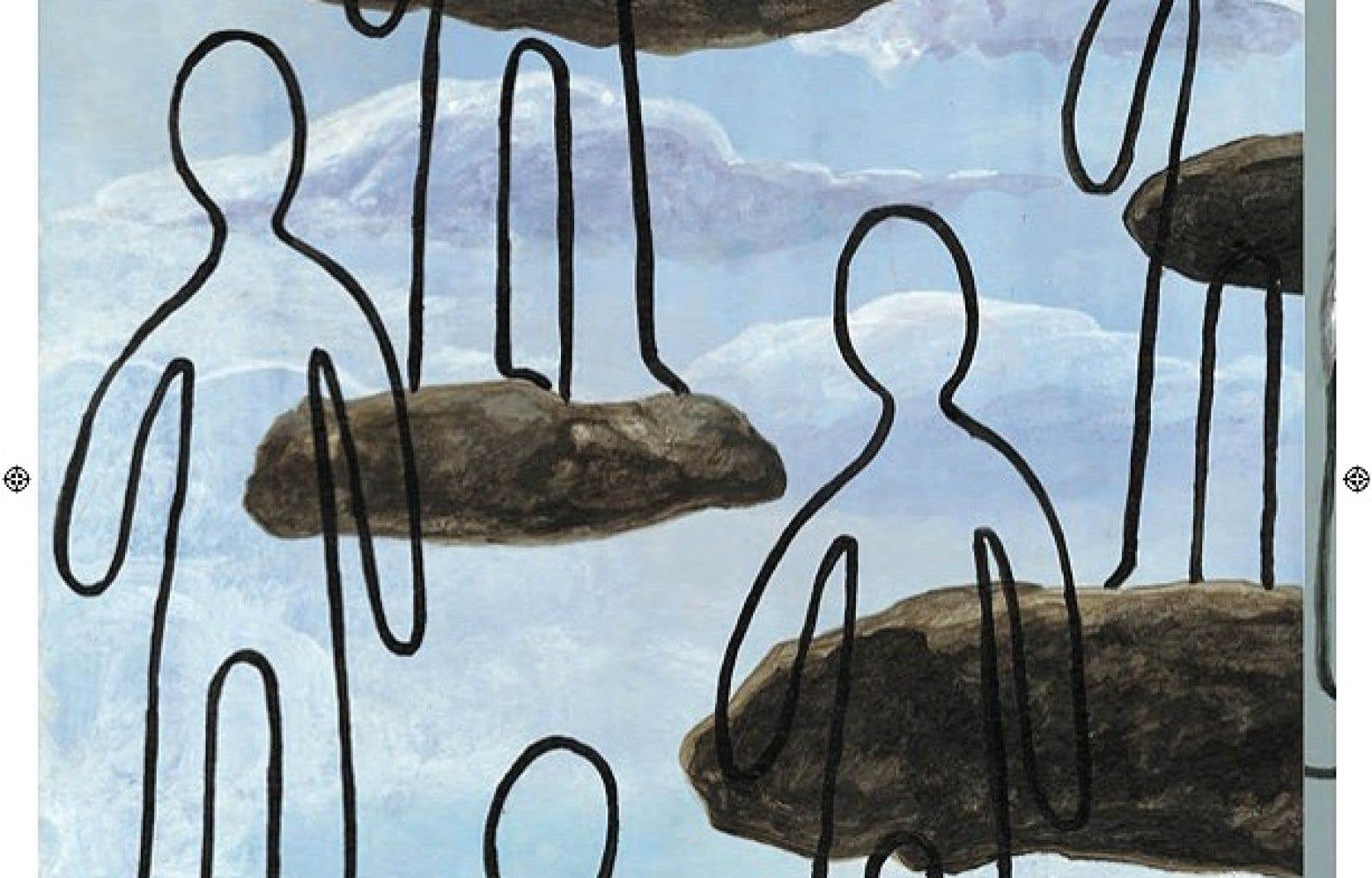Memories, like dreams, arise at will. We don’t summon them. Called by the moments that give rise to them, they follow mysterious laws which seem to compromise any ambition to organize them into a story. » And it is a bit of this stroboscopy of images, of memories, which furnishes this Childishness. In a careful collection of heterogeneous objects linked to childhood, the French author and illustrator Antonin Louchard reveals his talent as a painter.
After twenty years spent accumulating different trinkets with the aim of first photographing them, Antonin Louchard found himself surrounded by “bric-a-brac”, figurines, dolls, soldiers, toys which had in common to be linked to childhood and to be marked by time. From Provence where he awaits our call, well installed near the radiator in this large house around which winter has set in, the author and visual artist tells, in a warm and smiling voice, the desire and the purpose behind this opus. Without hope of fixing time or childhood, Childishness is rather, he says, a work done with a desire first of all to “account for the memory of childhood as it could subsist in the mind of the adult that[il] [est] became “. He also emphasizes that after some 12 years of working on the project, he notes that the images he offers here are a kind of “vanitas, a kind of obligatory fine arts figures where we depict a skull or a bouquet of withering flowers which should give us a little measure of our humanity, the fragility of our human condition, which is subject to the passing of time and which obviously takes us towards the end. Life being a mortal illness, as we know,” he explains, not without a smile.
Trying to bring some order to the menagerie, the artist presents his objects in six parts – chattering, rowding, babying, flitting, learning and scribbling – each represented by paintings linked to the activity announced. This art book which is aimed at everyone, and which allows images “to be displayed no longer only in books which will be wisely stored in libraries, but on the walls of museums or institutions which will house the originals of the book”, also served as a pretext to set up an exhibition presented in Paris, and which will travel elsewhere in the provinces over the next year.
Common thread
Like what he presents in his albums, in this case a childish perspective which has nothing to do with perfection or an idealization of childhood, Antonin Louchard celebrates it here also in what it is intriguing, abstract, enigmatic, ephemeral. Childishness, it’s a way of celebrating childhood. A celebration which, he explains, “is not magnified by the passing of time, but is a little cluttered with the wear and tear of time”. In the work, many of the figurines reproduced by Louchard are broken, damaged, and have peeling paint. Just like him – and like all of us – they have aged. They are, he will say, mirrors of what we have become.
The part of nostalgia that we could perceive in this look towards the past, towards this childhood which is no more, is rather, on the contrary, an extension of the past, a common thread which connects the child to the adult. “There is one thing that troubles me and it is this excessive, schizophrenic opposition that we create between the child and the adult. I am looking for solutions of continuity between these two ages of life. So, I’m not a dazed adult who is nostalgic for his childhood, but I think our childhood lives on in us in one way or another. In a more or less significant way depending on our profession, our life, our family life and all that. In fact, I’m trying to find a continuation of childhood in our adult lives. It’s the search for a solution of continuity, for a thread,” he says.
Go off the beaten track
If Antonin Louchard concocted this Childishness in a spirit of continuity with childhood and that he celebrates this prosperous period of his artistic touch, it is also an attempt to transgress this somewhat easy opposition that certain painters make between illustration and painting. “Painters often view illustrators as opportunistic retards who make an easy living. And here too, it seems outdated to continue reasoning like that. »
It is therefore also to extend the work of illustration that he returned to painting. “I’ve wanted to do it for a long time, but I didn’t have the time or the subject. What matters more and more today with all the means we have to make and reproduce images is the subject. You can make a strong work by being very clumsy technically, but by having a good subject. Let’s say I found my subject. A subject that allowed me to get back to painting. It allows me to renew myself and bring another perspective. »
And, going beyond the usual framework in which readers are used to seeing him evolve, Louchard emphasizes that he received somewhat contrasting opinions on this work. Some were shocked, pointing out that the paintings presented referred to Shinning or certain figurines from Stephen King films. Far from wanting to shock, scare or play with these codes, Louchard explains the importance of, on the contrary, taking an “inventory of the situation.” From childhood to [s]we’re getting old.”
And, as a way of participating, of being intimately linked to this universe of used objects, filled with stories and memories, Louchard inserts a self-portrait at the very end of the work. In the same way as a little pouët, a doll or a soft toy reproduced in painting, it participates in this continuity, in this succession of lasting images.
